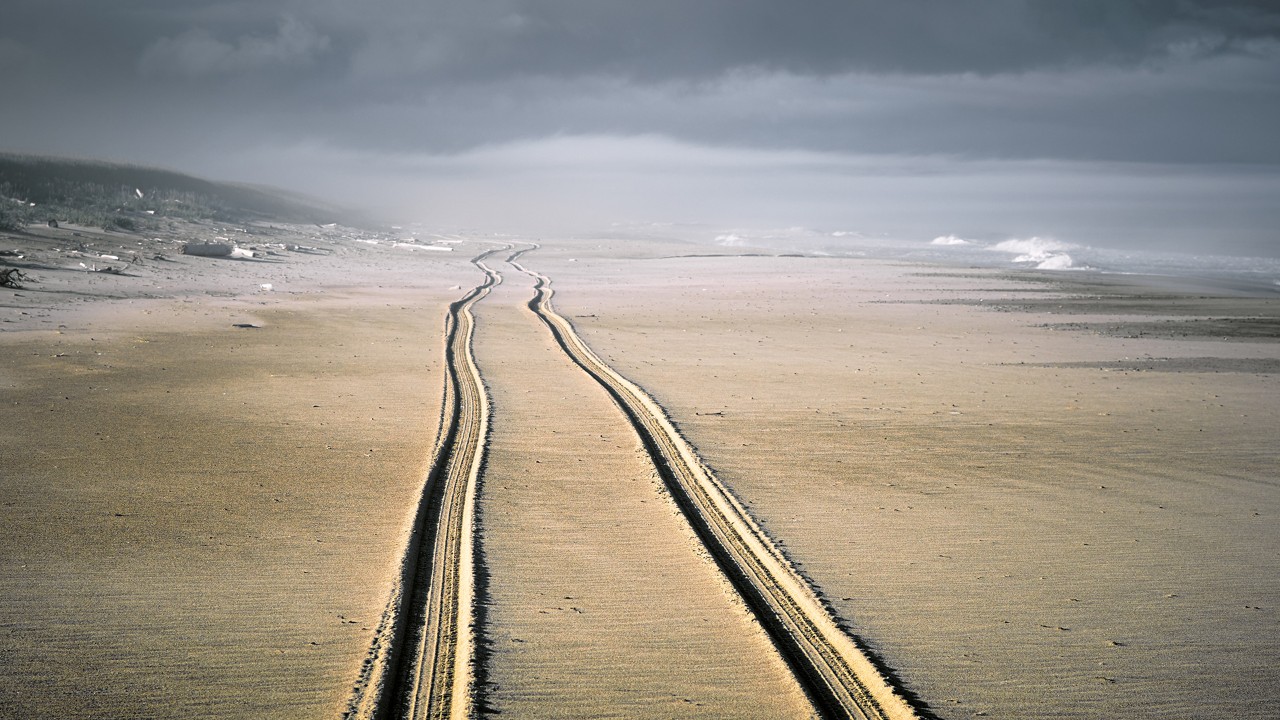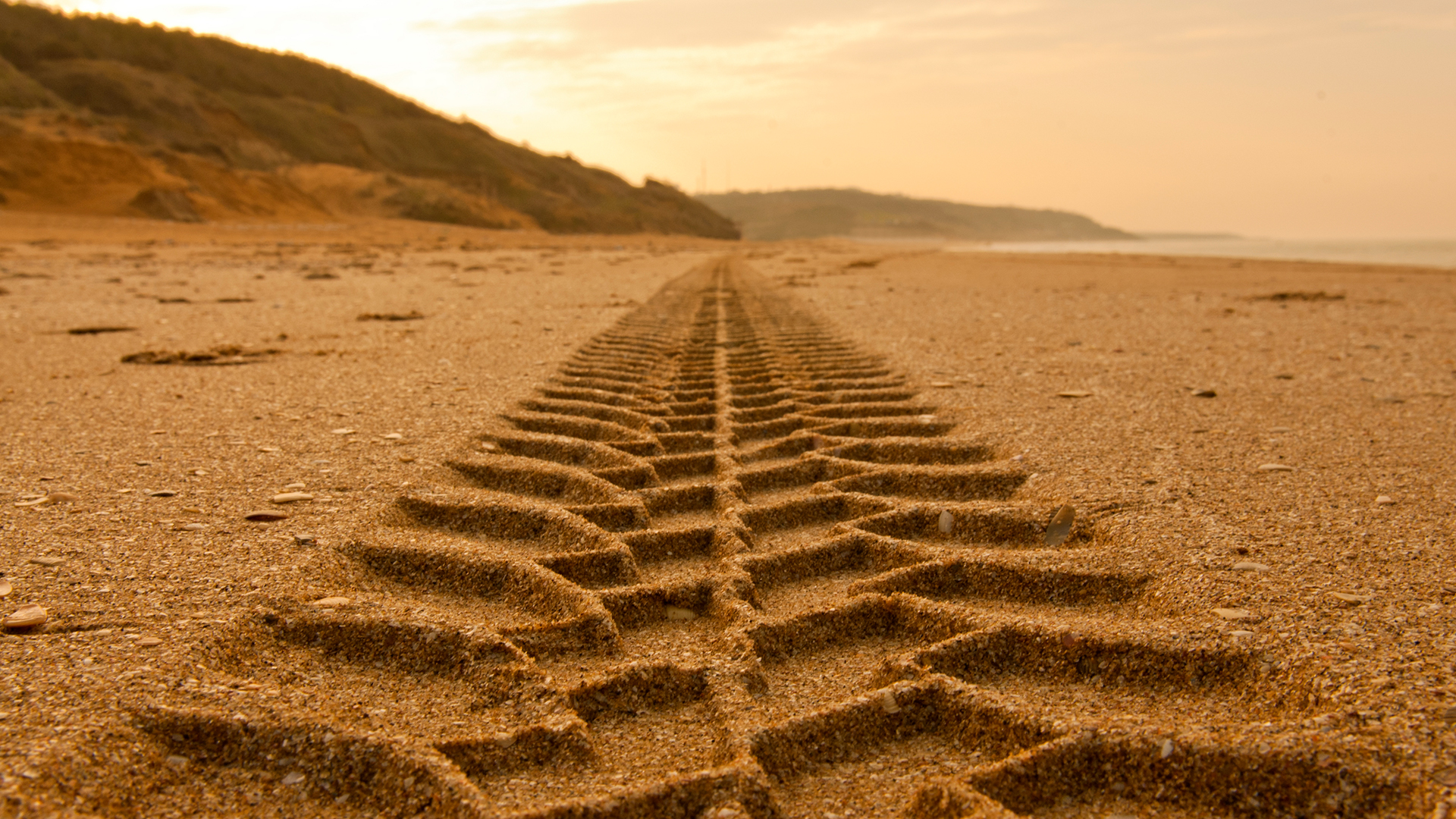Master the art of driving on sand in your 4WD; learn the essential techniques, vehicle preparations and recovery methods to navigate beach driving & sandy terrains safely.
Sand driving with your 4WD can be an exhilarating experience, but it also presents unique challenges that require proper technique and preparation. Whether you’re set to drive on the beach or ready to explore desert terrain, understanding how to navigate sand effectively is essential.
Having the right vehicle is important.
Not every vehicle is up to the challenge of driving on the beach. Without the right traction, it’s easy to lose control, experience wheel slip or even find yourself stuck.
It’s best to hit the beach in a 4WD or AWD (all-wheel drive) with high ground clearance, like the Mitsubishi Pajero Sport or Triton. These vehicles have better control over power distribution to the wheels, helping you to drive over the sand rather than sink into it. Some advanced 4WD vehicles like the Triton also offer the ability to switch into 4WD Low Range with Lock Diff to deliver increased traction for sand conditions.
Tips for Driving on Sand
The truth is beach driving takes practice, and driving on soft sand is different to hard sand or varied sandy terrain. Even the best new cars, and most experienced drivers won’t excel on the sand unless you take a few steps to prepare ahead of time.
Getting stuck does happen yet there are a few important considerations to ensure that you know exactly what to do to stay safe on your 4WD off-road adventures.
Prepare your 4WD:
Firstly, you might be asking yourself what the ideal tyre pressure is - and it’s so important that you find the right PSI to match the sandy conditions, as well your vehicle.
- Reduce your tyre pressure: Reducing your tyre pressure will distribute the weight of your 4WD across a greater surface area, giving you better traction so you sink less into the sand. How much to reduce the pressure will depend on the weight, tyre size, and model of your 4WD as well as the softness of the terrain you will be driving on. However, a good starting point for tyre pressure on sand is to aim for 18-20 PSI. Remember to re-inflate your tyres to the correct pressure as soon as possible after sand driving.
Ensuring that you have the right equipment with you as well as checking ahead and planning your beach driving route will give you some reassurance should the worst happen.
- Pack the right gear: Pack a tyre pressure gauge, shovel, traction aid, and sand flag. You may also wish to pack an air compressor to reinflate your tyres to the normal PSI when you get off the sand.
- Check the conditions: Check the weather and tides before you head out. There’s nothing worse than driving out along a beautiful stretch of sand, only to find it’s completely swallowed by water on the return trip!
Evaluate the track:
When you arrive at your destination, get out of the car and spend a few minutes inspecting the track.
Here are some features to keep an eye out for:
- Sand quality: Check which type of sand you will be driving over - dry powdery sand requires different driving techniques to wet or compacted sand.
- Existing 4WD tracks: Look for existing 4WD tracks in the sand that you can follow, since this compacted sand is easier to drive over.
- Steep drop offs and sand dunes: Some beaches have steep sand slopes or dunes. These can collapse under your vehicle and result in rolling, especially if you’re driving side on to the slope, so it’s best to avoid these if possible.
- Water: Keep a look out for water and tidal movements, and don’t drive too close to the water’s edge.
- People and other cars: We all love our beaches and national parks, so chances are you might not be the only one there. It can be better to spot busier areas ahead of time and avoid them.
Adapt your driving:
Driving on sand takes different techniques to gliding along a highway, or even other dirt and gravel roads.
Here are some key driving tips to improve your beach-side experience:
- Get in the right gear: The exact gear you need depends on the type of sand you’re driving on. Soft sand will almost always require low range 4WD, while some firm sand may do better with high range 4WD. If you have an advanced 4WD with features like the Mitsubishi Triton’s Super Select II, you can switch to 4WD High Range with Locked Centre Diff to get in gear on the fly.
- Approach with momentum: Driving on sand is all about momentum that can carry you over soft and deep sandy patches and prevent you getting stuck. Build up some speed before you enter the sand so you aren’t bogged down immediately.
- Maintain a steady speed: Once you’re on the sand, keep up the momentum and drive smoothly. Avoid sudden acceleration or braking as it can cause your tyres to dig in and get stuck. Heavy braking can also cause sand to build up in front of your tyres, making it hard to move forward again.
- Steer gently: Steer smoothly, gently correcting your 4WD’s path to maintain control. Avoid sudden or sharp turns, as these can destabilize your vehicle, cause your tyres to roll and result in you getting bogged down.

What to do if your car is stuck in sand?
No matter how good your sand driving technique, there’s still a good chance you’ll find yourself stuck in the sand. If you do get bogged down, it’s essential you know how to free your 4WD. Don’t just continue driving forward in hopes of escape – you’re only going to dig your wheels in deeper. Instead, try the following:
- Clear the sand from around your tyres: Remember that shovel you brought? Now is the time to use it. Dig the sand out from around your tyres to create an easier path for your 4WD.
- Try reversing: The tracks you created getting into this position may be compacted enough for you to simply drive out over them. If it’s not working however, stop before you dig yourself in deeper.
- Rock back and forwards: Slowly drive your 4WD backwards and forwards. This can compact the sand underneath you, and gain the momentum you need to get back on track.
- Use a traction aid: Get your traction mats or boards and wedge them under your wheels. These can help your 4WD drive to freedom.
